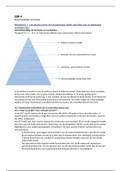Samenvatting
AdvStatIISummary
- Vak
- Instelling
Summary of my notes on the lectures, practical lectures, formative tests and key points for each task. The notes on the practical lectures contain answers and the tables from the SPSS output where it was necessary and the formative test includes how got to the solutions. Naturally, this is just a ...
[Meer zien]




